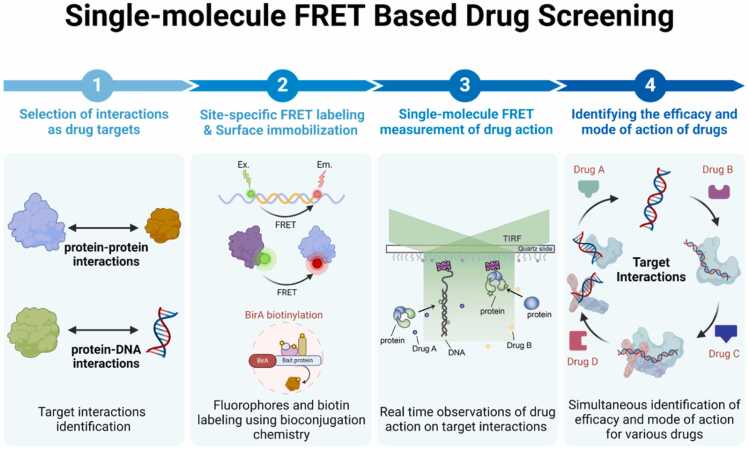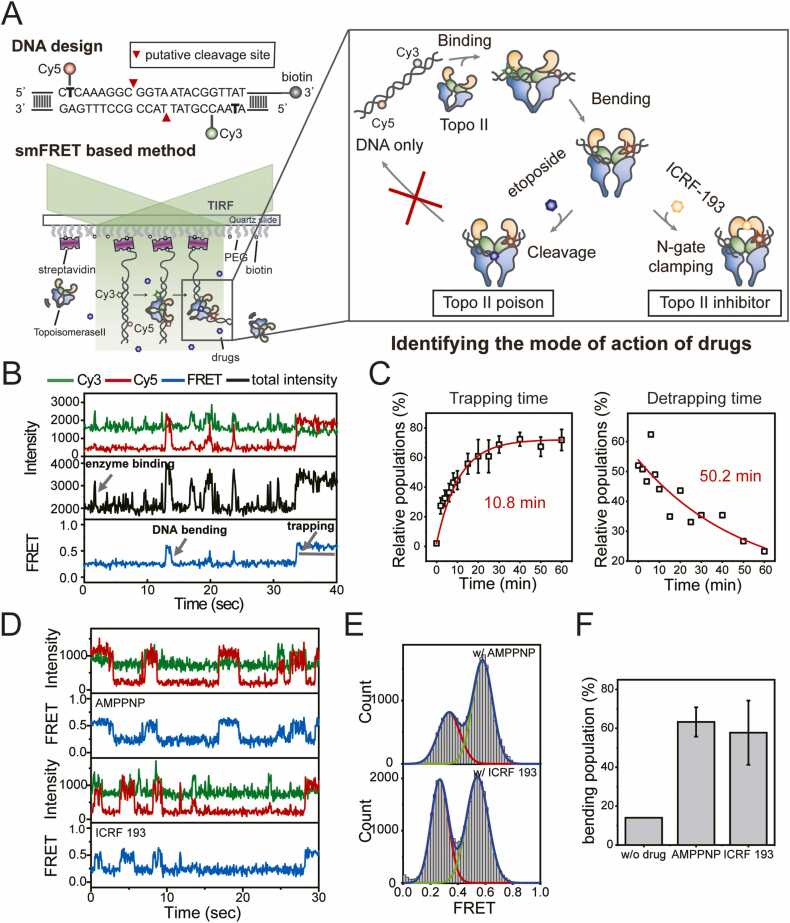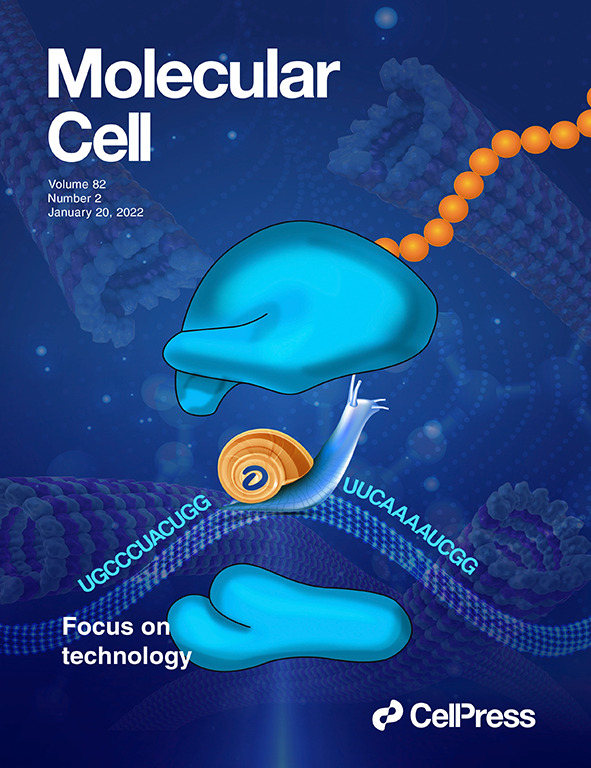Single-molecule FRET–based approach for protein-targeted drug discovery
IF 6.5
3区 生物学
Q2 BIOCHEMISTRY & MOLECULAR BIOLOGY
引用次数: 0
Abstract
Many therapeutic drugs target various proteins involved in diverse biological processes. Among these proteins, type II topoisomerases are critical targets for anticancer and antibacterial chemotherapies, yet the action mechanisms of many type II topoisomerase-targeting drugs have not been fully elucidated. In this regard, the development of rapid and accurate methods to identify the mode of action of potential drug candidates is crucial to improve the efficiency of drug screening and discovery. Here, using type II topoisomerase as a model system, we present a single-molecule fluorescence resonance energy transfer–based drug screening method capable of delineating when and how the drug candidates participate in the entire reaction steps of the target protein. This unique capability has been demonstrated to be applicable to the identification of representative types of widely prescribed drugs targeting type II topoisomerase: etoposide which stabilizes the enzyme-DNA cleavage complex, and bisdioxopiperazines (ICRF-I93) which lock the N-terminal gate of the enzyme into the closed state. Based on this demonstration experiment, we expect that our proposed method will be extended to broad applications in the screening of potent drugs targeting various proteins.


基于单分子 FRET 的蛋白质靶向药物发现方法。
许多治疗药物都以参与不同生物过程的各种蛋白质为靶点。在这些蛋白质中,II型拓扑异构酶是抗癌和抗菌化疗的关键靶点,然而许多II型拓扑异构酶靶向药物的作用机制尚未完全阐明。因此,开发快速准确的方法来确定潜在候选药物的作用模式对于提高药物筛选和发现的效率至关重要。在这里,我们以 II 型拓扑异构酶为模型系统,提出了一种基于单分子 FRET 的药物筛选方法,该方法能够确定候选药物何时以及如何参与靶蛋白的整个反应步骤。这种独特的能力已被证明适用于鉴定以 II 型拓扑异构酶为靶点的代表性药物类型:稳定酶-DNA 裂解复合物的依托泊苷和将酶的 N 端门(N-门)锁定为关闭状态的双二氧哌嗪类(ICRF-I93)。基于这次演示实验,我们希望我们提出的方法能在筛选针对各种蛋白质的强效药物方面得到广泛应用。
本文章由计算机程序翻译,如有差异,请以英文原文为准。
求助全文
约1分钟内获得全文
求助全文
来源期刊

Molecules and Cells
生物-生化与分子生物学
CiteScore
6.60
自引率
10.50%
发文量
83
审稿时长
2.3 months
期刊介绍:
Molecules and Cells is an international on-line open-access journal devoted to the advancement and dissemination of fundamental knowledge in molecular and cellular biology. It was launched in 1990 and ISO abbreviation is "Mol. Cells". Reports on a broad range of topics of general interest to molecular and cell biologists are published. It is published on the last day of each month by the Korean Society for Molecular and Cellular Biology.
 求助内容:
求助内容: 应助结果提醒方式:
应助结果提醒方式:


